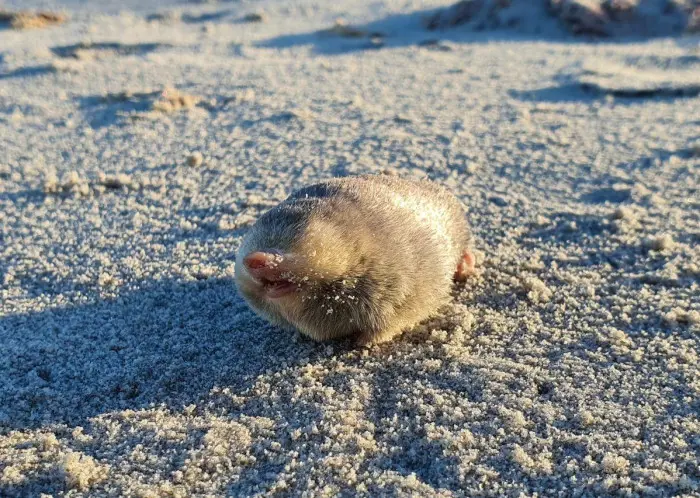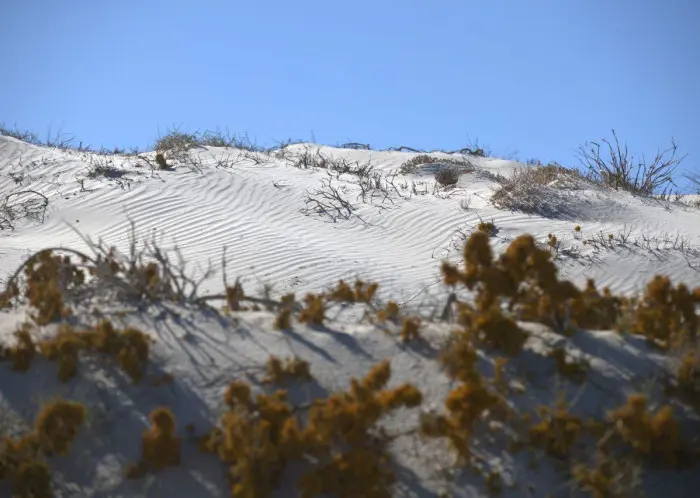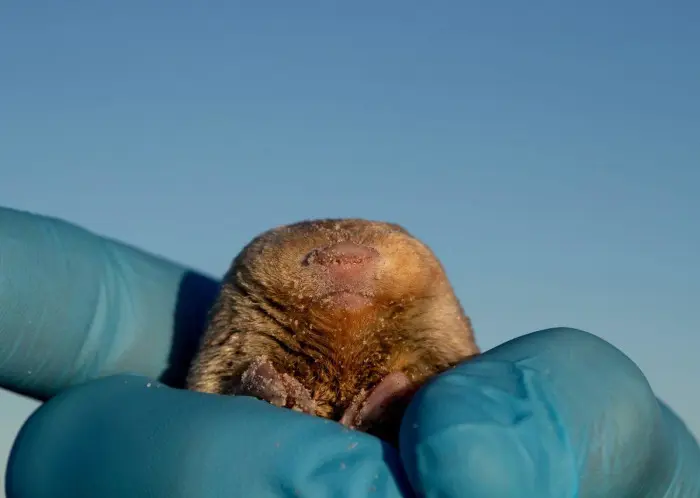PICS: Scientists rediscover blind mole with super hearing after 87 years
Having to survey up to 18 kilometres of dune habitat every day, unique methods were used to track down the elusive, iridescent De Winton's golden mole.

The elusive De Winton's golden mole. Picture: Supplied/Nicky Souness
JOHANNESBURG - A blind mole thought to be lost to science since 1936 has been rediscovered after a two-year search.
Conservationists and geneticists from the Endangered Wildlife Trust (EWT) and the University of Pretoria teamed up to search for De Winton's golden mole, among the 11 most wanted lost species.
Having to survey up to 18 kilometres of dune habitat every day, unique methods were used to track down the elusive, iridescent creature.
“It was a very exciting project with many challenges,” said EWT senior field officer Esther Matthew.
“Luckily we had a fantastic team full of enthusiasm and innovative ideas."
Leaving no sandhill unturned, the team used environmental DNA (eDNA), which the EWT described as DNA animals shed as they move through their environment, typically found in the form of skin cells, hair, and bodily excretions.

De Winton's golden mole is blind, using only its super hearing to detect vibrations. Picture: Supplied/JP Le Roux
Not only are golden moles capable of 'swimming' through sand, they live in largely inaccessible burrows. Their extremely sensitive hearing means they can detect the slightest vibrations above ground, making their appearance even more unlikely.
Their movements also hardly leave a trace, with the only known discovery of De Winton's golden mole documented at Port Nolloth beach in the Northern Cape.
"Extracting DNA from soil is not without its challenges, but we have been honing our skills and refining our techniques—even before this project—and we were fairly confident that if De Winton’s golden mole was in the environment, we would be able to detect it by finding and sequencing its DNA,” said EWT and Stellenbosch University conservation geneticist Samantha Mynhardt.
More than 100 soil samples from beaches and dunes on the northwest coast of South Africa, which underwent genetic analysis, were collected in June 2021, allowing teams to determine there were in fact several golden mole species hiding in sandy coastal stretches.

The dunes of Port Nolloth, which De Winton's golden mole calls home, during an expedition in June 2021. Picture: Supplied/Nicky Souness
Two more common species, the Cape golden mole and Grant's golden mole, were found during sample collection, as well as an endangered species called Van Zyl's golden mole.
De Winton's golden mole is remarkably similar to Van Zyl's, which meant teams who thought they had found the former needed more genetic information about it to confirm its true identity.
This process took nearly a year, but conservationists held out hope that De Winton's golden mole was not yet extinct.
“I was convinced it would just take the right detection method, the proper timing, and a team passionate about finding it," senior EWT conservation manager and search team member Cobus Theron said.
"Now not only have we solved the riddle, but we have tapped into this eDNA frontier where there is a huge amount of opportunity not only for moles, but for other lost or imperiled species.”

A mole found during a June 2021 expedition that scientists spent two years trying to confirm the identity of. It turned out to be a De Winton's golden mole after all. Picture: Supplied/Nicky Souness
And since collecting soil samples in 2021, four more De Winton's golden mole populations have been discovered.
The National Research Foundation’s Foundational Biodiversity Information Programme in South Africa, Rainforest Trust, and Prince Bernhard Nature Fund are now hard at work to protect the golden moles, while learning as much as they can about this rare species.